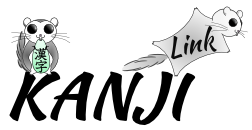Vocabulary list: explanations & notes
The file is broken down into sheets for each type of word (verbs, nouns, adjectives...). Here are some explanations and important notes about each sheet:
The complete list
This list (as well as the other sheets) is sorted by frequency rank.
Verbs
Probably one of the most interesting sheet! Not surprisingly, the most used verb in japanese is する (suru, to do).
[ NOTE ] It includes verbs that are mostly used as grammatical tools, such as しまう (shimau, to finish, to put away), which is usually connected to a verb at the TE form to express regret. This explains why some verbs are high ranked although they are not used much on their own.
Nouns
Another important one!
[ NOTE ] It includes numbers, names of some historical figures and country names.
Adjectives (-i) & "Adjectival nouns"
Adjectives are words used to describe things, people, etc. For example: "good", "tall", "big", "bad"... But in Japanese, there are 2 types of adjectives: i-adjectives and na-adjectives!
[ NOTE ] In this file, there is not a specific category for na-adjectives. They are included in the sheet "Adjectival nouns".
Adverbs
Adverbs describe verbs, adjectives, other adverbs or word-groups. For example: "immediately", "completely", "quite", "very"...
Conjunctions
They are used to connect words and sentences. For example: "and", "but", "or"...
Pronouns
They replace a noun. For example: "I", "you", "it", "there"...
[ NOTE ] This sheet includes question words ("what", "who", "when"...).
Determiners
Determiners are small words that specify a noun. For example: "this kind of...", "that...", "which...", etc.
[ NOTE ] They must be attached to a noun!
Particles
Particles are short words that indicate the function of the preceding word in the sentence (Is it the subject? The place of the action? The time?...).
Auxiliaries
Most of them are attached to verbs to express the tense, the negation, the level of politeness...
[ NOTE ] Auxiliaries only used in classical Japanese (り、なり、たり、じ、けり、らむ...) as well as those used in some dialects (はる、へん、ねん...) are included in this sheet!
Prefixes
They are elements placed at the beginning of a word to modify its meaning. For example: "un-" in "unhappy", "pre-" in "preview"...
Suffixes
They are elements placed at the end of a word to modify its meaning. For example: "-al", "-ize", "-tion" ("nation", "national", "nationalize", "nationalization")...
Interjections
They express emotions. For example: "ah", "oh", "er"...
[ NOTE ] This sheet includes common expressions such as "Hi!", "Thanks!", etc.
